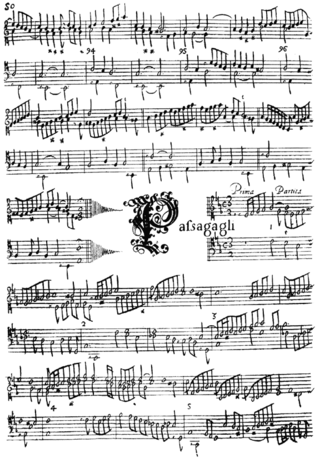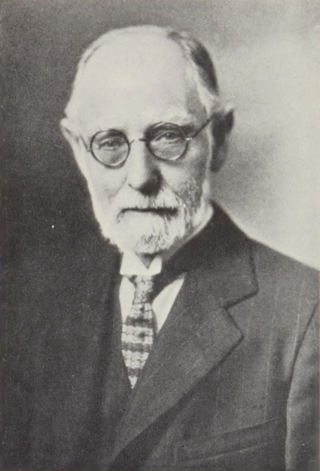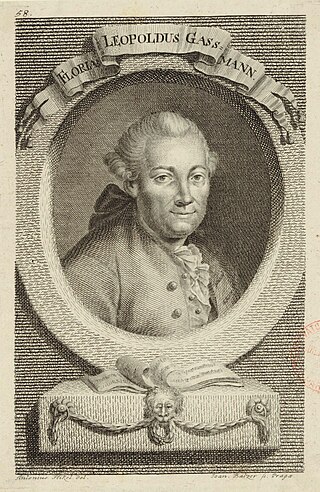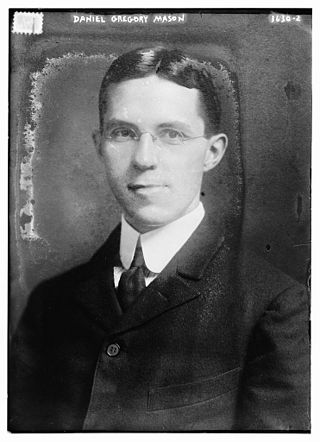Related Research Articles

The passacaglia is a musical form that originated in early seventeenth-century Spain and is still used today by composers. It is usually of a serious character and is typically based on a bass-ostinato and written in triple metre.

Josef Gabriel Rheinberger was an organist and composer from Liechtenstein, residing in Bavaria for most of his life. As court conductor in Munich, he was responsible for the music in the royal chapel. He is known for sacred music, works for organ and vocal works, such as masses, a Christmas cantata and the motet Abendlied; he also composed two operas and three singspiele, incidental music, secular choral music, two symphonies and other instrumental works, chamber music, and works for organ.
Bernard Rogers was an American composer. His best known work is The Passion, an oratorio written in 1942.

Wallingford Constantine Riegger was an American modernist composer and pianist, best known for his orchestral and modern dance music. He was born in Albany, Georgia, but spent most of his career in New York City, helping elevate the status of other American composers such as Charles Ives and Henry Cowell. Riegger is noted for being one of the first American composers to use a form of serialism and the twelve-tone technique.

Percy Goetschius was an American composer, music theorist, and teacher who won international fame in the teaching of composition.

Florian Leopold Gassmann was a German-speaking Bohemian opera composer of the transitional period between the baroque and classical eras. He was one of the principal composers of dramma giocoso immediately before Mozart. He was one of Antonio Salieri's teachers.

Daniel Gregory Mason was an American composer and music critic.
Arthur Shepherd was an American composer and conductor in the 20th century.
La Boutique fantasque, also known as The Magic Toyshop or The Fantastic Toyshop, is a ballet in one act conceived by Léonide Massine, who devised the choreography for a libretto written with the artist André Derain, a pioneer of Fauvism. Derain also designed the décor and costumes for the ballet. Ottorino Respighi wrote the music based on piano pieces by Gioachino Rossini. Its world premiere was at the Alhambra Theatre in London on 5 June 1919, performed by Sergei Diaghilev's Ballets Russes.

Samuel Gardner was an American composer and violinist of Russian Jewish origin. He won a Pulitzer prize with a string quartet in 1918. He was a student of Franz Kneisel and Percy Goetschius, and began his career as a concert violinist; among his compositions is a violin concerto. He wrote a number of other chamber works, and a handful of things for orchestra, including Broadway, which was performed by the Boston Symphony in the 1929-30 season.

The San Bernardino Symphony orchestra is an American symphony orchestra, based in San Bernardino, California. Founded in 1929 by newspaper magnate and conductor, James K. Guthrie, the San Bernardino Symphony is one of the oldest professional orchestras in the state of California. They put on a concert subscription season and many additional performances throughout the region.
Lamar Edwin Stringfield was a classical composer, flutist, symphony conductor, and anthologist of American folk music.

Winifred Merrill Warren was an American violinist and music educator, a professor of music at the Indiana University School of Music from 1938 to 1961.
Marjorie Goetschius was an American composer, pianist, cellist, and singer. She was born in Raymond, New Hampshire. Her songs were interpreted by popular singers such as Frank Sinatra and Ray Charles.
References
- Goetschius, Percy (1929). Masters of the Symphony. Boston: Oliver Ditson Company. OCLC 855537.
- Hill, George R.; Bryan, Paul R. (1981): "Thematic Index" in The Symphony 1720 - 1840 Series B - Volume X, ed. Barry S. Brooks. New York & London: Garland Publishing. ISBN 0-8240-3807-X.